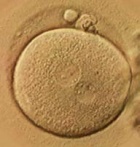The Answer Explained: Find out when various aspects of lifelong health are established.
When Does Health Begin?




Health begins long before pregnancy
A pregnant woman’s ability to supply her developing child’s nutritional needs is shaped, in large measure, by the adequacy of her own stores of fat, muscle, calcium, iron, folic acid, etc.1 Her stores are determined, in part, by her health, growth pattern, and nutrition starting from the time of her own conception.2
|
Good nutrition and health over a lifetime are the best preparation for delivering healthy children! |
Health begins at conception
Around the time of conception, folic acid deficiency may lead to birth defects of the spine and brain, the most common of which is spina bifida.3 Taking daily folic acid supplements starting at least one month prior to conception prevents up to 70% of these defects.4
A recent study found that taking folic acid daily for one year prior to conception reduced severe premature birth by 70% and moderately severe premature birth by 50%.5
|
Good nutrition helps prevent birth defects and prematurity. |
Health begins in early pregnancy
All body systems develop during the first eight weeks after conception6 — before many pregnant women are even aware that they are pregnant!
Undernutrition starting early in pregnancy tends to produce babies proportionally reduced in overall size and with internal organs containing fewer cells and altered function.7 These babies may be more prone to future disease8 and their internal organs may start to wear out before old age.9
Prenatal tobacco use reduces delivery of nutrients and oxygen (to mother and baby)10 throughout pregnancy and increases the child’s risk of obesity,11 type II diabetes,12 and lung disease.13
|
Good nutrition slows the aging process. Avoiding tobacco promotes lifelong health! |
Health begins in middle and late pregnancy
Undernutrition later in pregnancy may selectively impair rapidly growing organs with significant long-term consequences.14
| Undernutrition of the: | May lead to future: |
|---|---|
| Kidneys | High blood pressure,*15 renal insufficiency16 |
| Muscles | Insulin resistance and type II diabetes,*17 sarcopenia18 |
| Liver | Hyperlipidemia,*19 abnormal clotting*20 |
| Pancreas | Impaired insulin production, type II diabetes*21 |
*Elevates risk of cardiovascular disease (heart attack, stroke, and peripheral vascular disease)
|
Good nutrition helps prevent chronic disease. |
Health begins in infancy
Nutrition and growth during infancy help establish each individual’s lifetime risk of conditions such as type I diabetes22 and osteoporosis.23 It is best for most babies when well nourished mothers breastfeed exclusively for the first six months.24
|
Good nutrition pays dividends for life! |
So, when does health begin?
Lifelong health begins long before pregnancy, during pregnancy, and during infancy.
Learn how you can...
Footnotes
Bibliography
Sadler TW. 2004. Langman's medical embryology. 9th ed. Baltimore: Lippincott Williams & Wilkins.
Search EHD
Bergen HT. 2006. Exposure to Smoke During Development: Fetal Programming of Adult Disease. Tobacco Induced Diseases. Vol. 3, No. 2:5-16.
Search EHD
Ong KK, Dunger DB. 2002. Perinatal growth failure: the road to obesity, insulin resistance and cardiovascular disease in adults. Best Pract Res Clin Endocrinol Metab. 16:191-207.
Search EHD Ref. / Abstract Full Text
Montgomery SM, Ekbom A. 2002. Smoking during pregnancy and diabetes mellitus in a British longitudinal birth cohort. BMJ. 324:26-27.
Search EHD Ref. / Abstract Full Text
von Kries R, Toschke AM, Koletzko B, Slikker W, Jr. 2002. Maternal smoking during pregnancy and childhood obesity. Am J Epidemiol. 156:954-961.
Search EHD Ref. / Abstract Full Text
Sayer AA, Cooper C. 2005. Fetal programming of body composition and musculoskeletal development. Early Hum Dev. Sep;81(9):735-44.
Search EHD Ref. / Abstract Full Text
Godfrey KM, Barker DJ. 2000. Fetal nutrition and adult disease. Am J Clin Nutr. May;71(5 Suppl):1344S-52S.
Search EHD Ref. / Abstract Full Text
Dubois L, Girard M. 2006. Early determinants of overweight at 4.5 years in a population-based longitudinal study. Int J Obes (Lond). 30:610-617.
Search EHD Ref. / Abstract Full Text
Power C, Jefferis BJ. 2002. Fetal environment and subsequent obesity: a study of maternal smoking. Int J Epidemiol. 31:413-419.
Search EHD Ref. / Abstract Full Text
Adams AK, Harvey HE, Prince RJ. 2005. Association of maternal smoking with overweight at age 3 y in American Indian children. Am J Clin Nutr. 82:393-398.
Search EHD Ref. / Abstract Full Text
Stene LC, Joner G, Norwegian Childhood Diabetes Study Group. 2003. Use of cod liver oil during the first year of life is associated with lower risk of childhood-onset type 1 diabetes: a large, population-based, case-control study. Am J Clin Nutr. Dec;78(6):1128-34.
Search EHD Ref. / Abstract
The EURODIAB Substudy 2 Study Group. 1999. Vitamin D supplement in early childhood and risk for Type I (insulin-dependent) diabetes mellitus. The EURODIAB Substudy 2 Study Group. Diabetologia. 42(1):51-4.
Search EHD Ref. / Abstract
Ravelli GP, Stein ZA, Susser MW. 1976. Obesity in young men after famine exposure in utero and early infancy. N Engl J Med. Aug 12;295(7):349-53.
Search EHD Ref. / Abstract
Williams LJ, Rasmussen SA, Flores A, Kirby RS, Edmonds LD. 2005. Decline in the prevalence of spina bifida and anencephaly by race/ethnicity: 1995-2002. Pediatrics. Sep;116(3):580-6.
Search EHD Ref. / Abstract Full Text
International Diabetes Federation. 2002. Experts reach consensus on causes of Type 2 diabetes. International Diabetes Federation Website. International Diabetes Federation.
Search EHD Full Text
Barker DJP. 2001. Fetal origins of cardiovascular and lung disease. David J. P. Barker (editor), Claude Enfant (executive editor). Lung Biology in Health and Disease, Volume 151. New York: Marcel Dekker.
Search EHD
Zipitis CS, Akobeng AK. 2008. Vitamin D supplementation in early childhood and risk of type 1 diabetes: a systematic review and meta-analysis. Arch Dis Child. Jun;93(6):512-7.
Search EHD Ref. / Abstract
Bukowski R, Malone FD, Porter FT, Nyberg DA, Comstock CH, Hankins GD, Eddleman K, Gross SJ, Dugoff L, Craigo SD, Timor-Tritsch IE, Carr SR, Wolfe HM, D'Alton ME. 2009. Preconceptional folate supplementation and the risk of spontaneous preterm birth: a cohort study. PLoS Med. May 5;6(5):e1000061.
Search EHD Ref. / Abstract
Medical Research Council. 1991. Prevention of neural tube defects: results of the Medical Research Council Vitamin Study. Lancet. Jul 20;338(8760):131-7.
Search EHD Ref. / Abstract
Barker DJP. 2008. Nutrition in the Womb: How better nutrition during development will prevent heart disease, diabetes, and stroke. The Barker Foundation.
Search EHD
Hyppönen E, Läärä E, Reunanen A, Järvelin MR, Virtanen SM. 2001. Intake of vitamin D and risk of type 1 diabetes: a birth-cohort study. Lancet. Nov 3;358(9292):1500-3.
Search EHD Ref. / Abstract
Zamora SA, Rizzoli R, Belli DC, Slosman DO, Bonjour JP. 1999. Vitamin D supplementation during infancy is associated with higher bone mineral mass in prepubertal girls. J Clin Endocrinol Metab. Dec;84(12):4541-4.
Search EHD Ref. / Abstract
Barker DJ, Martyn CN, Osmond C, Hales CN, Fall CH. 1993. Growth in utero and serum cholesterol concentrations in adult life. BMJ. Dec 11;307(6918):1524-7.
Search EHD Ref. / Abstract
Barker DJP. 1998. Mothers, babies and health in later life, Second edition. Churchill Livingstone.
Search EHD
Jaquet D, Vidal H, Hankard R, Czernichow P, Levy-Marchal C. 2001. Impaired regulation of glucose transporter 4 gene expression in insulin resistance associated with in utero undernutrition. J Clin Endocrinol Metab. Jul;86(7):3266-71.
Search EHD Ref. / Abstract
Gartner LM, Morton J, Lawrence RA, Naylor AJ, O\'Hare D, Schanler RJ, Eidelman AI; American Academy of Pediatrics Section on Breastfeeding. 2005. Breastfeeding and the use of human milk. Pediatrics. Feb;115(2):496-506.
Search EHD Ref. / Abstract
Blencowe H, Cousens S, Modell B, Lawn J. 2010. Folic acid to reduce neonatal mortality from neural tube disorders. Int J Epidemiol. Apr;39 Suppl 1:i110-21.
Search EHD Ref. / Abstract

